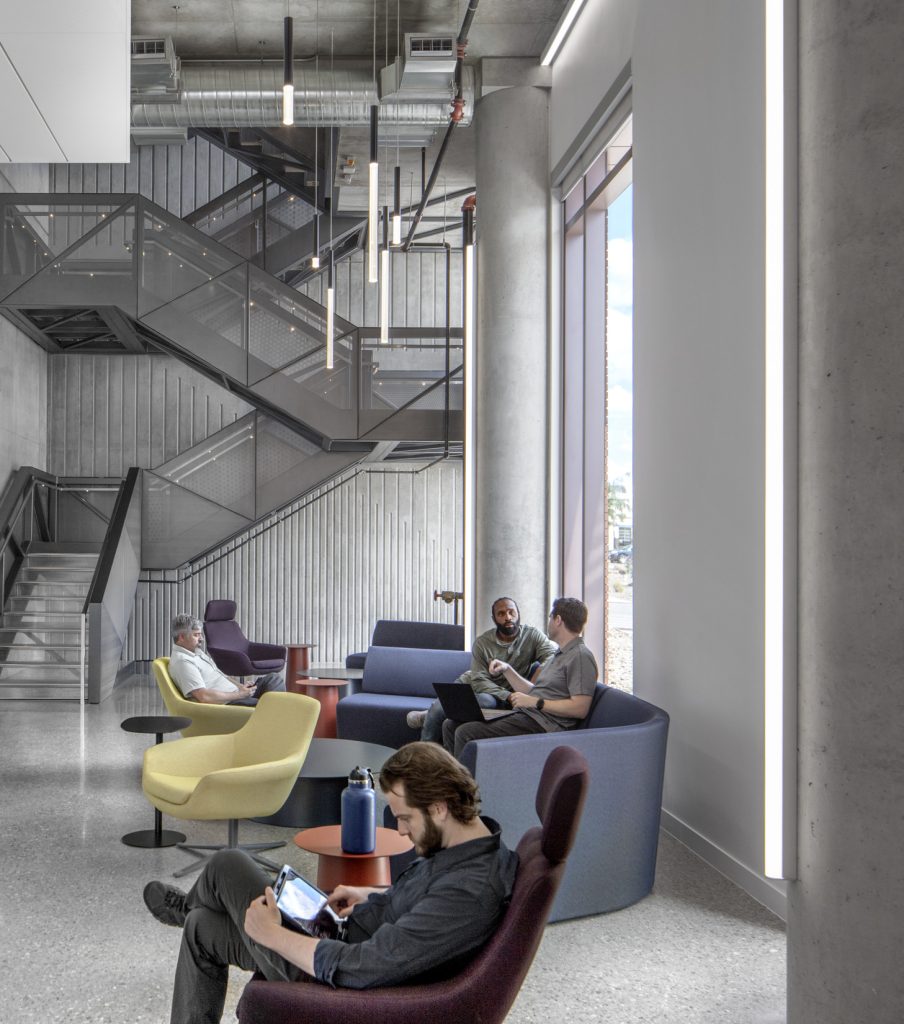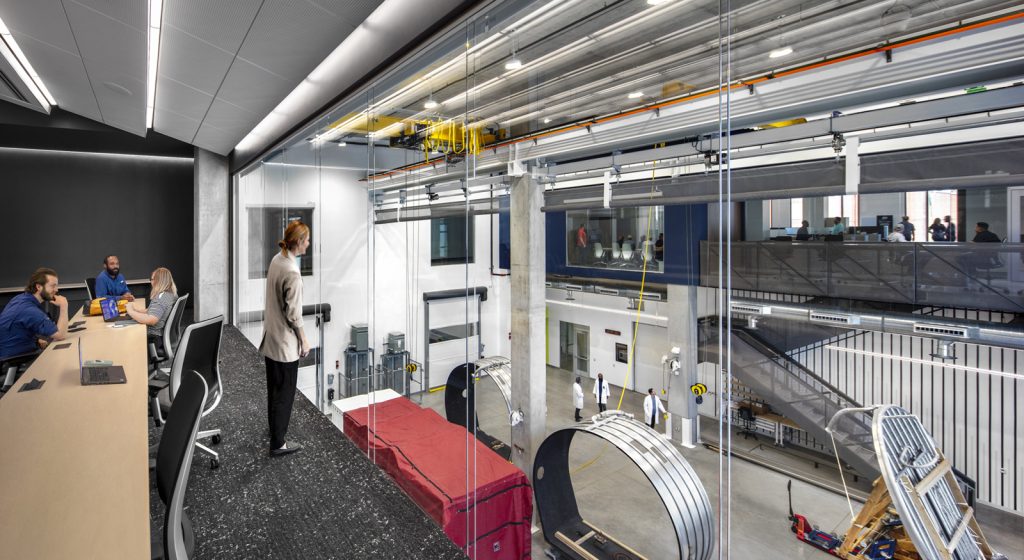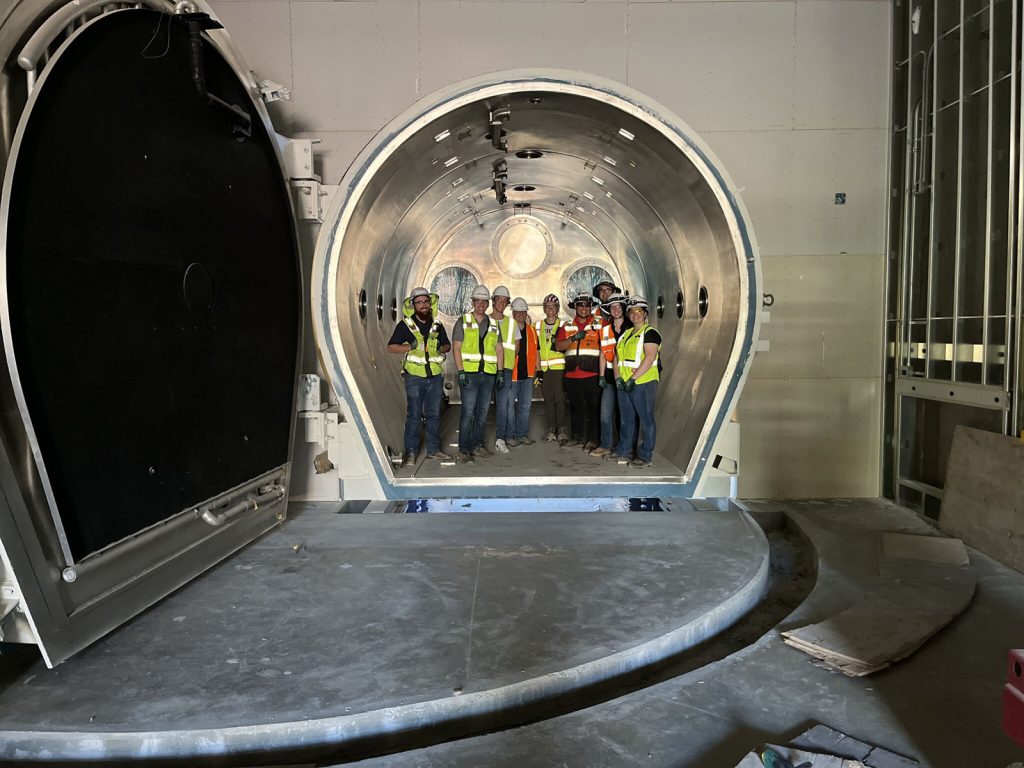Photo Credit: Bill Timmerman
The University of Arizona set out to create an iconic campus research center that would help attract students, faculty and grant revenue. In addition to serving as a powerful recruiting tool, the new facility would need to enable diverse and flexible research activities to promote the university’s reputation as a leading atmospheric and space exploration research contributor. The result was the state-of-the-art Applied Research Building, the first of its kind, located on a prominent intersection on the school’s campus.
The Applied Research Building houses specialized equipment such as the largest Thermal Vacuum (TV) chamber on a university campus in the world, an anechoic chamber and specialty clean room labs. By consolidating multiple technologies and testing spaces under one roof, the project aimed to enhance efficiency, reduce expenses and accelerate research. And the building’s innovative design reflects the unique research conducted within, but at the same time successfully integrates into the campus aesthetically.
Overcoming Challenges with Outstanding Teaming
Built during the height of the COVID-19 pandemic, the design-build team faced some significant challenges. The university halted all operations and material lead times increased by 6 to 8 months. But despite those challenges, the project was able to maintain its 20-month schedule and stay within budget.
Collaboration and design-build best practices were central to the project’s successful completion. Weekly focus groups brought the design-build team and trade partners together to brainstorm, share insights and address challenges proactively. For example, when the availability of critical 400-amp electrical breakers was disrupted, the team worked with their electrical trade partner to develop a temporary solution that enabled equipment testing and power until permanent breakers could be installed. This proactive approach prevented a potential 26-week delay without incurring additional costs. The design-build team also prioritized local engagement in Tucson, employing 60% of trade partners from the area and relocating some team members to immerse themselves in the community. Outreach extended to underrepresented communities, including the Pascua Yaqui Tribe, through targeted recruitment and partnerships to ensure diverse perspectives were included.
The team’s focus on teaming and integrated partnership fostered a culture of trust, transparency and mutual respect which allowed them to navigate the complexities of the pandemic and ultimately deliver a world-class facility that exceeded expectations.
Winner – Project of the Year
The Applied Research Building exemplifies Design-Build Done Right® through groundbreaking innovation and exceptional collaboration. Using Progressive Design-Build, the team engaged in focus groups and maintained open communication, even during pandemic-related disruptions, to complete the project on time and within budget. The building’s space exploration-inspired design combines functionality with an open floor plan, enhancing the university’s reputation and advancing research. VDC and BIM technologies, including laser scanning and augmented reality, optimized accuracy and efficiency. Sustainability was a priority, with the project aiming for LEED Silver, as was engaging the community with 60% local trade partners and 10% minority- and women-owned businesses. The awards jury praised the building as “more than just rocket scientists in white lab coats; but a space that fosters collaboration and connection, advancing research in an environment designed for the future.”
Winner – Best in Design – Architecture
The building’s façade design stands out, ingeniously responding to its environment with sustainable features like textured vertical fins, integrated frit and a breathable rain screen to reduce solar heat gain, balancing energy efficiency with occupant comfort. Its crinkled metal exterior mimics the solar arrays of space stations, reflecting the university’s mission. Sustainability is key, from energy-efficient systems to conservation efforts that include recapturing water on site, storing below grade, and filtering through bio-swales and rain gardens. Awards jurors praised how the project “enhances the experience of occupants through daylit collaboration spaces and visual interdepartmental connectivity.”
Design-Build Team
| Client/Owner: | The University of Arizona |
| Design-Build Firm: | McCarthy Building Companies, Inc. |
| Architect: | SmithGroup |
| Engineers: | Martin White Griffis Structural Engineers; Dibble Corp; Speedie & Associates |
| Specialty Contractors: | Drexel Heights, Contracting, LLC; Kovach; Comfort Systems; Sturgeon Electric; McCarthy Self-Perform Concrete |
| Project Cost: | $54,633,782 |
| Construction Duration: | 21 Months |
Photos



